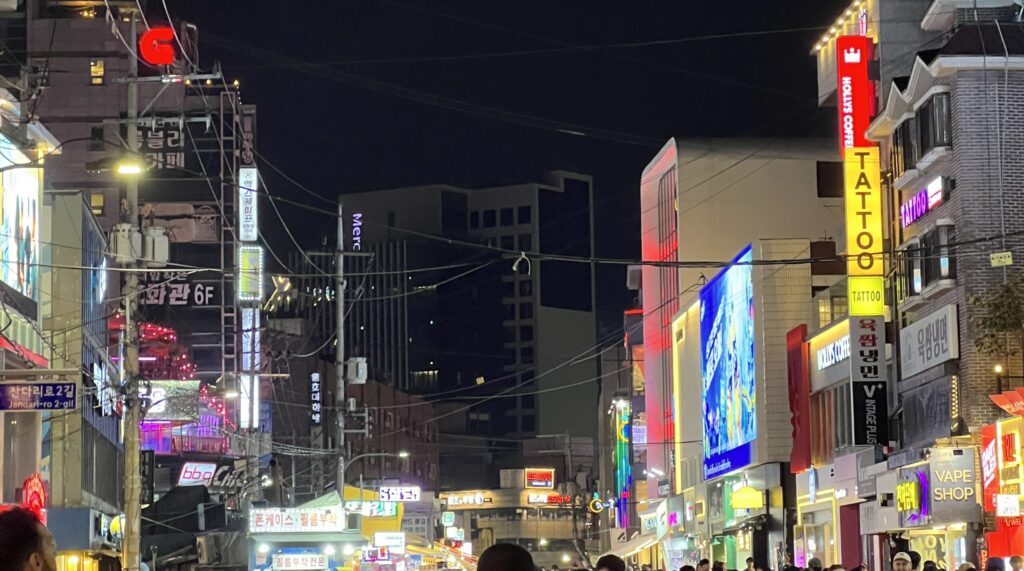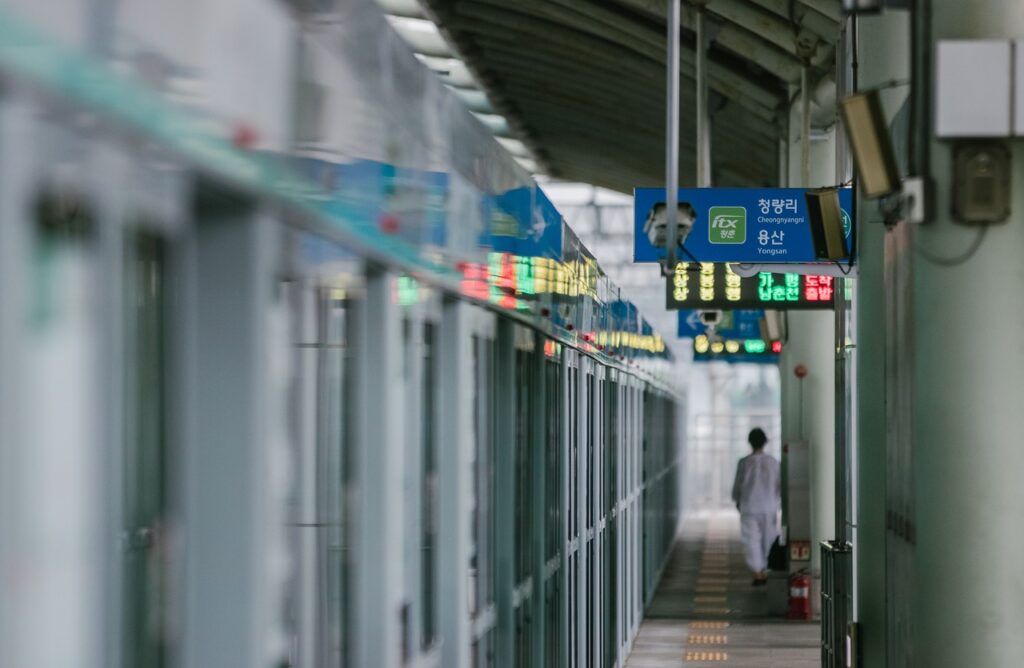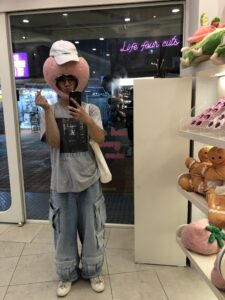
People make me feel overwhelmed. I am a true introvert at heart. In the warmth of summer, my day of choice is spent with fingers sore from bouldering, cat-curled in an armchair with a Salley Rooney book, and sweating over the blistering heat of pan and stove. I thrive on alone time as it is the only time I can truly relax and feel peaceful and content. It has been a week since I have been in Seoul, and I am finally feeling comfortable enough to begin exploring alone, but to build that confidence required connection and discomfort: the harbinger of change.
When I touched down in Incheon – an hour away from the premier capital of South Korea, I immersed myself in people. Being far away from loved ones made me feel lonely – especially with the 16-hour time difference between Oregon: my home state, and Hongdae – Seoul’s premier center for Gen-Zers. I was lucky to find friends who helped me navigate the emotional challenges of moving to a new country and the physical challenges of navigating a whole new world. I was terrified of moving around alone, afraid of missing my stop on the subway or losing my place in the mass of Hongdae. My first time leaving my accommodation alone, I ate at a tteokbokki restaurant a mere block from my apartment. One block became four on the next excursion. Four blocks became eight on the next.

Seoul’s districts are mapped properly for traveling alone. Firstly, each sector is denoted by blue signs present on every street corner. Signs commonly read in both Hangul and Engish. I fear walking alone at night, but Seoul mitigates this nervousness with bright lights that dot each path. Navigation apps have a steep learning curve but quickly become your best friend. NaverMap (the equivalent of GoogleMaps) is intuitively gridded based on Seoul’s robust public transport system. KakaoMap connects to South Korea’s premier social media platform KakaoTalk, providing it with cross-compatibility-based benefits. I can geotag my location, send directions to friends via the social messaging app, and pinpoint landmarks. Language translation apps such as Papago are imperative and saved me during lonely lunches in Namtereong (남대령), where my limited Korean speaking ability prevented me from tasting the best of foreign delicacies without internet assistance.
Physical landmarks denote my way around my accommodation. Mindful app usage demonstrates my locational adaptability. My confidence in navigating Seoul’s physical landscape is growing. Yet, there is still a cultural zeitgeist surrounding solo navigation in Seoul, an ever-present reminder that discomfort and change are still myriad intertwined. Seoul emphasizes group dynamics, saving face, and upholding the status and respect of those around you. I found myself feeling awkward sitting alone last night. It was the first time I had ever eaten alone in a sit-down restaurant, and admittedly, with depleted social battery and oodles of stress, I expected my solo date with Ruth Ozeki’s A Tale For The Time Being to recover and revitalize me. Instead, I shivered in dim lighting, knowing full well that each eye was on me. I quietly read amongst worn oak chairs and bright smiles on soju posters.
Life alone in a new country can be freeing and inspiring. Oh, so lonely. I find some solace in the growing culture of honjok (혼적), or “life alone” in Seoul: a rapidly expanding youth-led movement counter to South Korea’s strict traditionalism. My time here brings work experience and the joys of travel, and the freedom to escape my life in academia. Oh, so lonely. Solitude in adventure is war with loneliness, anxiety, and nervousness. I will grow as I walk among the bustling streets: a wallflower in a concrete jungle.











